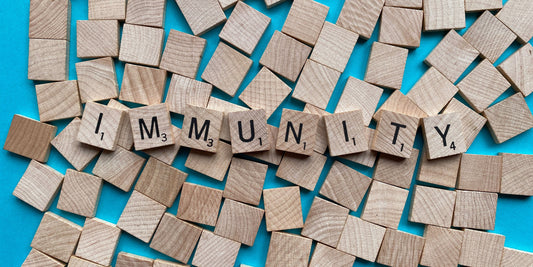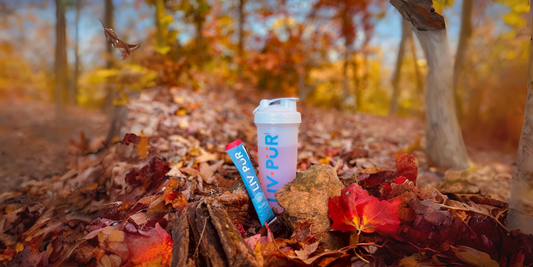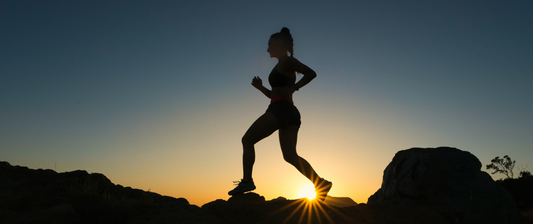Boosting the metabolism, reducing abdominal fat, and possibly lowering blood pressure – anyone devoted to a keto diet can tell you about the benefits.
So, what could go wrong? The bottom line is that you’re likely to experience side effects on any diet where you increase one macronutrient while restricting another.
Keto is no exception. Keep reading to learn what the keto diet is all about, the common mistakes people make on it, and how to avoid them.
What is a keto diet?
A ketogenic “keto” diet is where you eat mostly fat, moderate amounts of protein, and very few carbs. This macro distribution will trigger a metabolic state called ketosis.
During ketosis, your body uses fat for energy instead of glucose. You may also experience a reduction in hunger signals. These two effects often lead to weight loss.
However, weight loss was never the intended purpose of the ketogenic diet. The diet was created by doctors in the 1920s as an epilepsy treatment but fell out of favor with the advancement of drug therapies.
The Biggest Mistakes People Make on a Beginner Keto Diet
To say the keto diet has exploded in popularity would be an understatement. In the last 20 years, it has gone from a little-known medical protocol to a multibillion-dollar industry.
With so many people clamoring to give it a shot, mistakes are bound to happen. Here are the biggest ones and how to avoid them.
1. Not paying enough attention to protein.
The beginner keto diet commonly includes too much or too little protein.
People consuming too little protein often do so because they’re hyper-focused on increasing fat. This can lead to muscle loss, fatigue, cravings, hormonal changes – a whole host of problems we’re trying to avoid on keto.
Conversely, some starting out may try to replace too much of their former carbohydrate intake with protein instead of fat. If you eat too much protein on keto, your body turns
the extra into glucose. This might prevent you from going into ketosis, which is, of course, the whole goal of the diet.
The general recommendation for eating protein on a keto diet is to make it 20-25% of your daily calories. You could also stick to 0.7 grams per pound of body weight. For example, if you weigh 170 pounds, this is 119 grams of protein daily.
2. Resorting to highly processed keto diet foods.
Double bacon cheeseburger please - hold the bun! The dirty keto diet might involve quite a bit of junk food, minus the most obvious carbs. In addition to being as unhealthy as any processed diet, additives like sugar can hold you back from getting into ketosis.
Also, being a multibillion-dollar industry, brands are looking to cash in on keto. Those “keto-friendly” convenience snacks might seem like your saving grace on the go, but check the label carefully. It might just be marketing hype.
3. Giving up during the flu phase.
You may feel very unwell at various points during the first few weeks of a keto diet. The symptoms vary, but weakness, nausea, digestive issues, and headaches are possible.
It’s at this stage that many people decide keto just isn’t for them. It’s good to read up on others’ experiences with keto flu so you know what to expect and what might help. With some knowledge and planning, you can emerge from keto flu a fat-burning machine. Which brings us neatly to our next item.
4. Getting dehydrated/not replenishing electrolytes.
Staying hydrated can help keep you on track, but dehydration isn’t only common during the flu phase. Many people in ketosis retain less water, so you have to drink more than you used to.
The trouble is, having lower insulin from a keto diet can also mean you’re losing electrolytes more quickly. For this reason, a hydration drink that includes sodium and other electrolytes may be more effective.
A hydration drink can also prevent doing the inverse and drinking too much water. This too can dilute the amount of necessary electrolytes you need to stay energized and in balance.
5. Forgetting about dietary fiber.
Which is better for staying regular, cheese or oatmeal? Obviously, it’s oatmeal, but many precious sources of fiber are banned on a keto diet plan because they’re also carbs. This means you may struggle with constipation, bloating, and more.
Therefore, find good whole-food sources of fiber and stick with them. Try cruciferous vegetables (broccoli, cauliflower, Brussels sprouts) as well as avocado and flaxseed.
6. Stepping on the scale every day.
Weight loss – specifically, fat loss – is a common goal among keto dieters. But that doesn’t mean you should judge your success (or failure) by what you see on the scale.
First, retaining less water in the earlier phases will make the number go down, but that doesn’t mean you lost fat. Plus, if you’re moving into an overall healthier lifestyle with adequate exercise, you could be gaining muscle. This too will impact what the scale says.
Choose other ways to assess your progress, such as fitting into a certain item of clothing or taking measurements.
7. Being too judgmental toward plant foods.
When going keto, it can be a shock to learn that nutritious veggies such as sweet potatoes are off-limits. This sudden dedication to counting the amount of carbs in healthy plant foods such as beans and fruit narrows down the diet.
When you remove so much variety, you’re at risk for a nutrient deficiency. Before you go all in on keto, read up on diet diversity. Start eating the widest selection of keto approved foods you can. It’ll be a lot easier if you avoid the next mistake, too.
8. Opting against meal prep and planning.
If you’re too busy to shop, cook, and prep, keto might not be for you. It’s completely forgivable to eat what’s ready and available from time to time. But the best way to avoid the pitfalls of keto is to create a menu, shop accordingly, and start putting meals together in advance.
This doesn’t mean you have to cook food for the whole week at once. You can prep certain ingredients or process produce alone. At the very least, prepare snacks and have a plan for grab-and-go foods so you’re never caught without keto-friendly sustenance.
9. Making big changes too quickly.
Going full keto too fast not only makes you more likely to quit, but it can be pretty hard on your body. A lot of experienced, reputable keto sources encourage easing into this new high-fat, low-carb diet.
To do this, first determine where most of your carbs are coming from. Maybe it’s the sandwich every day at lunch, with the bowl of pasta for dinner. Reduce how much you consume these biggest carb sources gradually. For instance, cut out one sandwich per week, trying a new low-carb alternative along the way.
10. Avoiding the doctor.
A keto diet plan isn’t right for everyone. If you’re pregnant, have hypothyroidism, or have had your gallbladder removed, you can’t go keto. In fact, if you’re on any medications or have been diagnosed with any health condition, you should run it by your physician first.
From there, check in so your doctor can make sure your new diet isn’t a detriment to your health in any way.
What to Eat on a Keto Diet
Here’s a brief breakdown of what a beginner keto diet could include.
- Meat: High-fat seafood like salmon and snapper, plus poultry, lamb, and beef.
- Dairy: Choose dairy high in fat like heavy cream, cheeses, butter, and sour cream.
- Nuts: Macadamia nuts, pistachios, almonds, walnuts, pecans, and nut butters.
- Other Fats and Oils: Eggs, lard, coconut oil, and olive oil are all good on keto.
- Vegetables: Low-carb vegetables like broccoli, cauliflower, bell peppers, arugula, spinach, mushrooms, tomatoes, and asparagus.
- Fruit: Raspberries, blackberries, and blueberries. These are to be consumed in moderation to avoid so much sugar.
Finding Success on a Keto Diet
A high-fat, low-carb lifestyle requires planning and effort, but it may be worth it. In addition to fat loss, you might enjoy lower blood pressure, better cholesterol, and more.
All of that said, it’s easy to get tripped up. Going to extremes instead of transitioning slowly, missing fiber and other nutrients, or getting hung up on processed foods can ruin the chance of any good result.
Fortunately, now that you know, it’s all avoidable. Keep the diet as diverse and wholesome as possible, and you’ll be in ketosis before you know it.
And before you get there, don’t forget to address hydration. As we learned, you lose more water and sodium on keto. LivPur Hydrate is low-carb, low-sugar, and packed with electrolytes, amino acids, and vitamins. LivPur Energy is sugar free and uses a slow absorbing, organic caffeine that allows for sustained energy. Both products are keto friendly, and is NSF Certified for Sport, so you know you’re getting what’s on the label – no marketing hype necessary.




